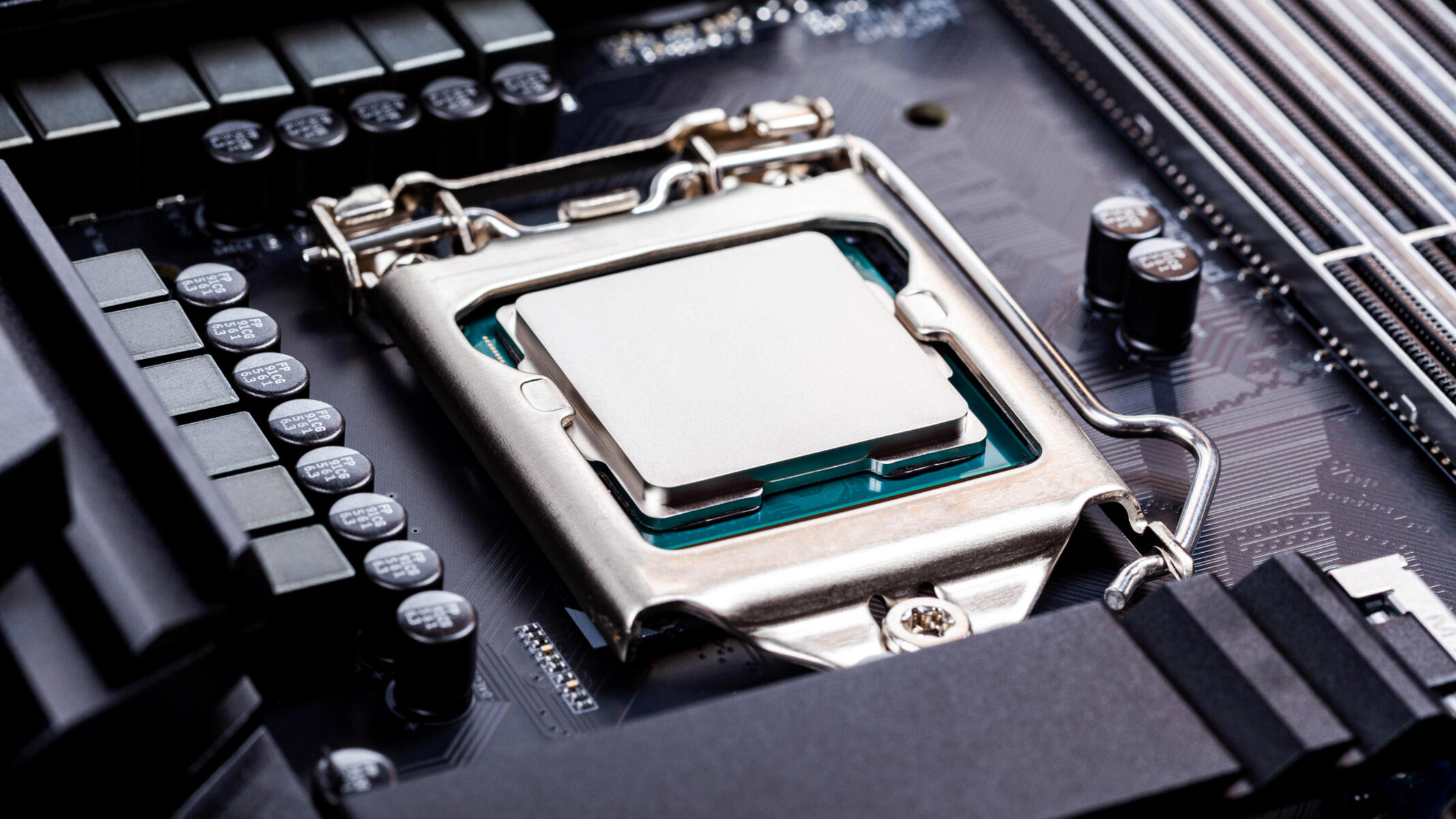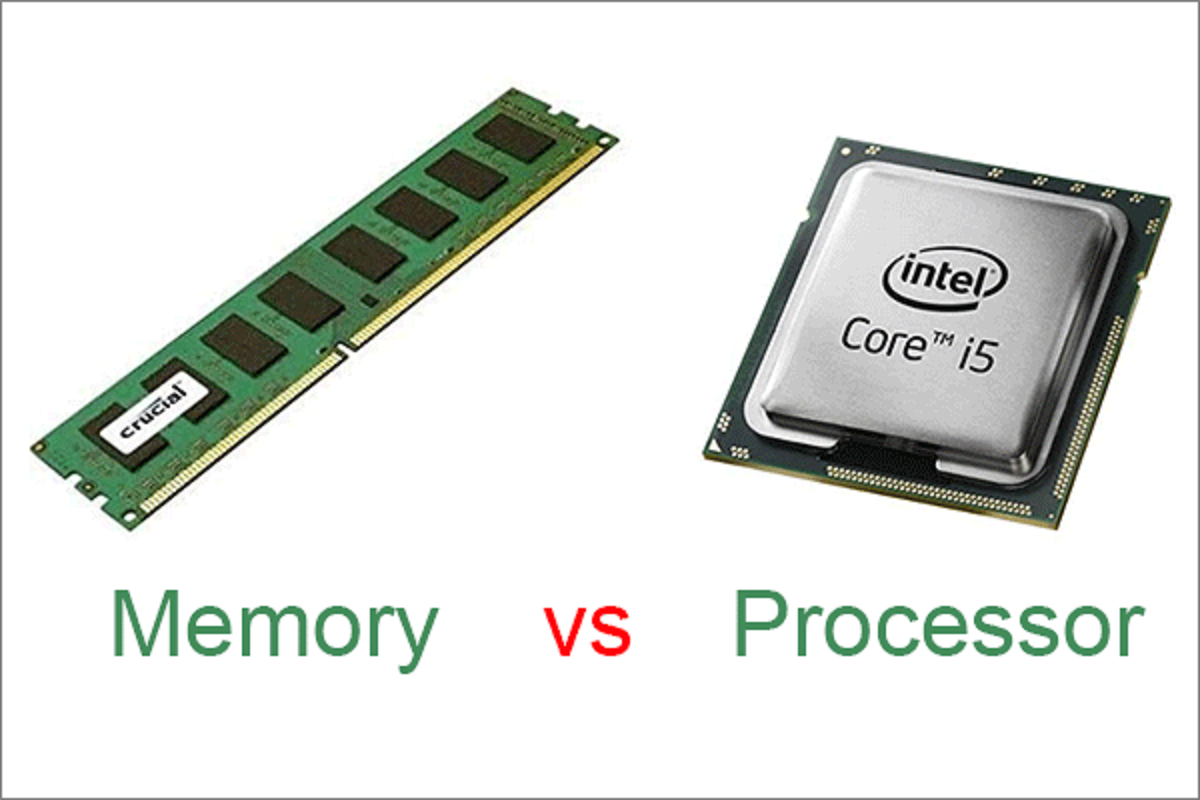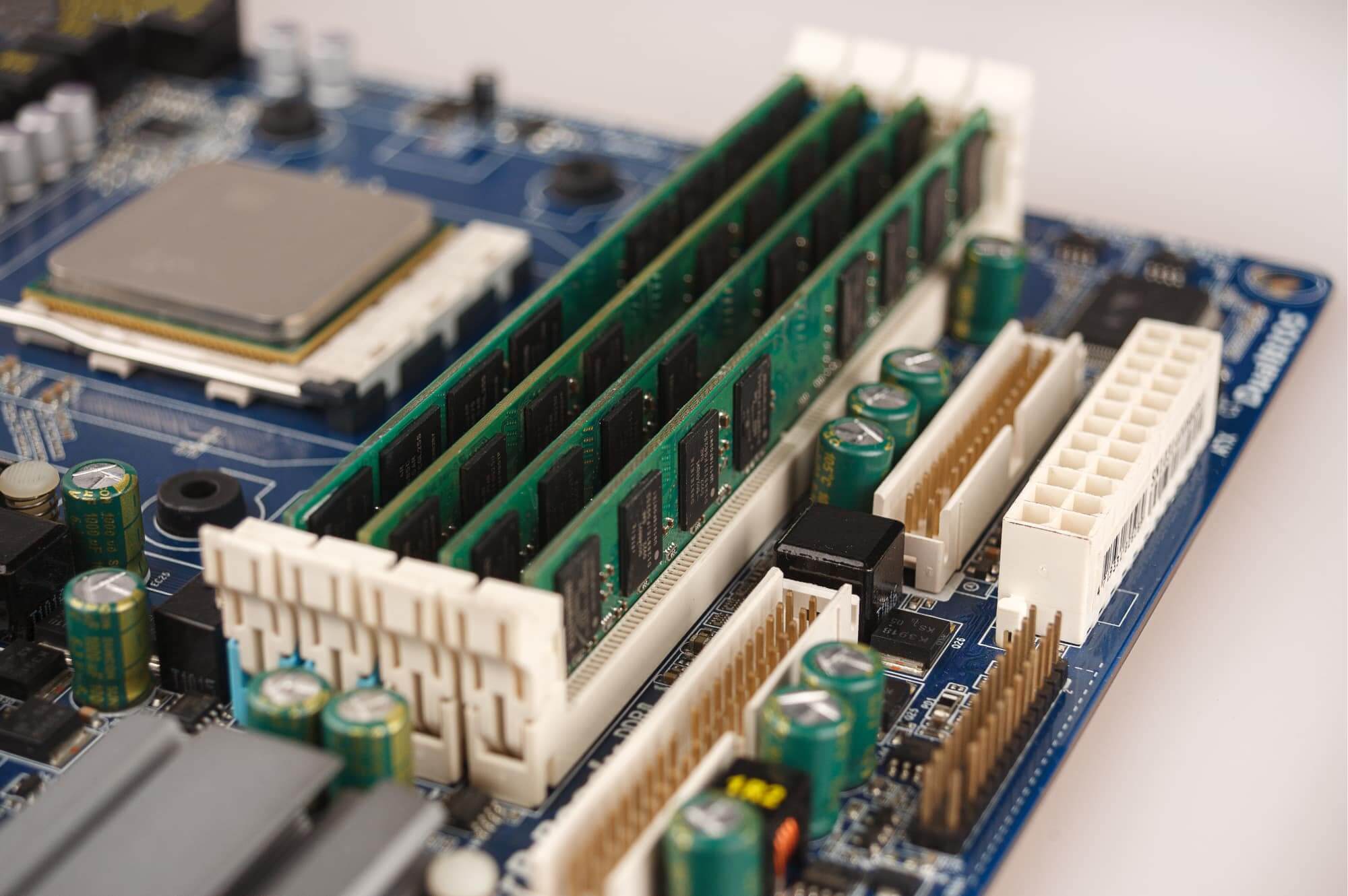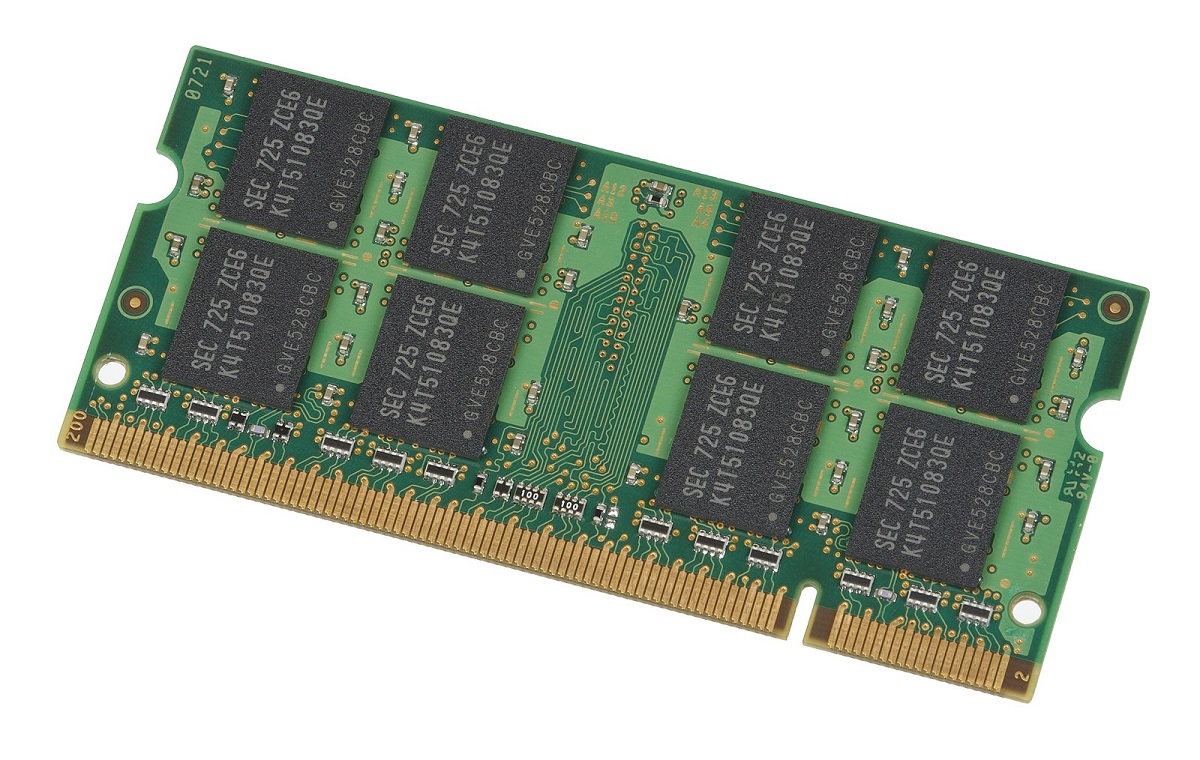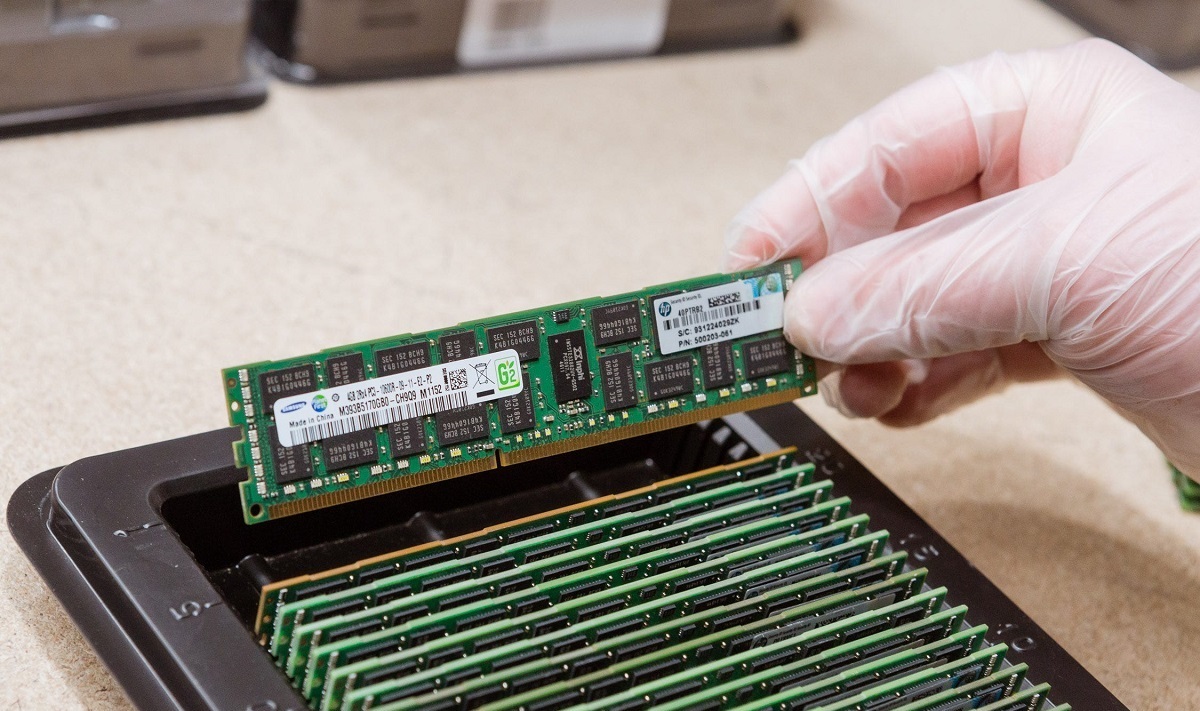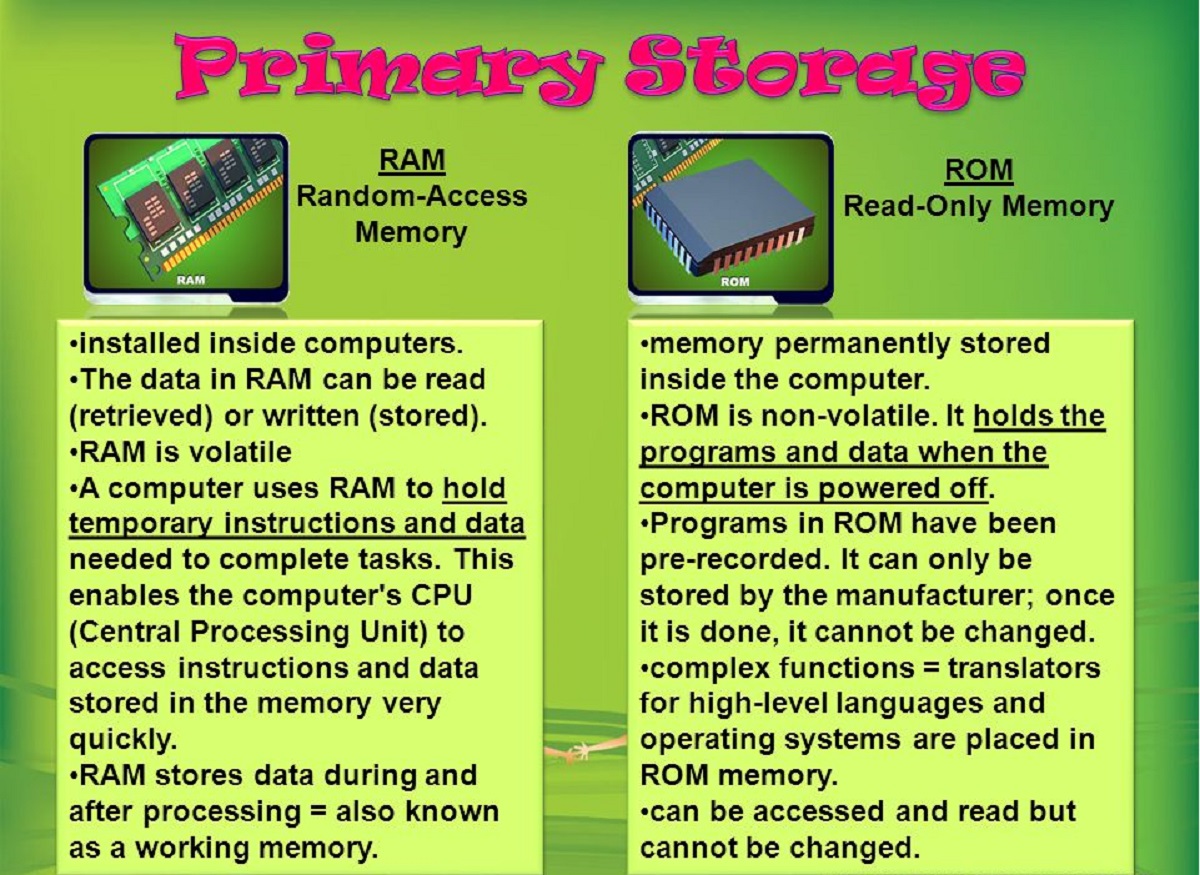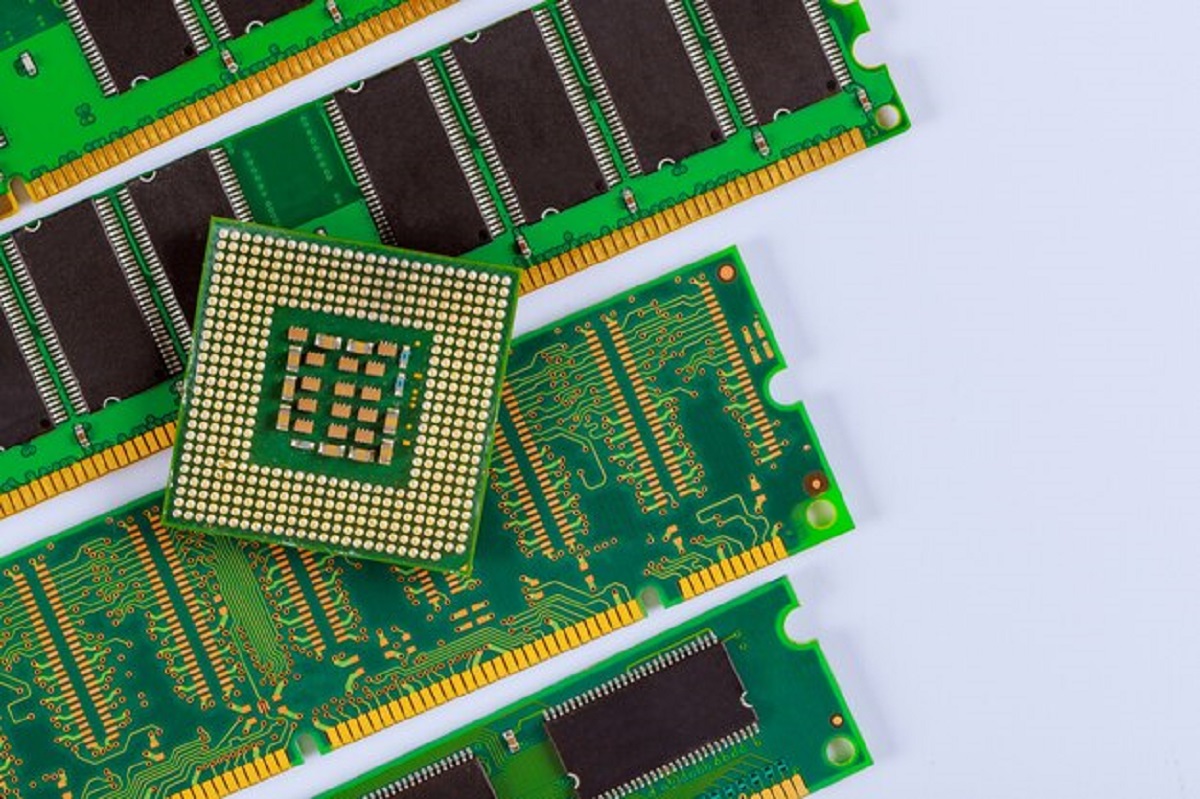Introduction
When it comes to the functionality and performance of a computer processor, one of the key factors that greatly influences its speed and efficiency is the utilization of cache memory. Cache memory plays a crucial role in storing frequently accessed data and instructions, allowing for faster retrieval and execution by the central processing unit (CPU).
Understanding how cache memory works and the type of RAM used in the CPU’s cache is essential for any computer enthusiast or professional in the field of technology. In this article, we will delve into the specifics of CPU cache and explore the different types of RAM utilized in this critical component of modern processors.
Cache memory can be thought of as a small and extremely fast storage unit that bridges the gap between the processor and the main system memory, which is generally larger but slower. Its purpose is to serve as a buffer, holding frequently accessed data closer to the CPU for quick access. By utilizing cache memory, the CPU can reduce the time it takes to retrieve and process data, resulting in improved overall performance.
The importance of CPU cache cannot be overstated, as it significantly impacts the speed and efficiency of a computer system. Without cache memory, the CPU would need to rely solely on accessing the slower main memory for every single data or instruction request, leading to increased latency and decreased performance.
As the demand for faster and more powerful computers continues to grow, manufacturers have developed various types of cache memory to meet these requirements. The specific type of RAM used in the CPU’s cache plays a crucial role in determining its speed, size, and efficiency.
In the following sections, we will explore the different types of cache memory, delve into the characteristics of the RAM used, and examine the advantages and disadvantages of each type. By gaining a deeper understanding of how CPU cache and RAM work together, we can appreciate the intricacies of modern computer architecture and make informed decisions when it comes to selecting the best hardware for our computing needs.
What is CPU cache?
CPU cache, commonly referred to as processor cache, is a small but ultrafast memory component located on the CPU chip itself. It serves as a temporary storage area for frequently accessed data and instructions, allowing the CPU to quickly retrieve and execute them without having to rely on slower main memory.
The purpose of CPU cache is to bridge the speed gap between the CPU and main memory. While main memory, typically in the form of RAM (Random Access Memory), offers large storage capacity, it is comparatively slower in terms of access speed. On the other hand, CPU cache provides much faster access times, enabling the processor to perform operations more quickly.
Cache memory operates on the principle of locality, which states that data and instructions that are accessed together or in close proximity are likely to be accessed again in the near future. By storing this frequently accessed data in cache memory, the CPU can avoid the latency associated with fetching it from main memory.
There are different levels of cache memory in a computer system, typically denoted as L1, L2, and L3 caches. L1 cache is the closest to the CPU core and is the fastest but has the smallest capacity. L2 cache is larger but slightly slower, and L3 cache, which is optional and not present in all processors, offers the largest but slowest storage space.
Cache memory operates using a hierarchical structure called cache lines, which are small blocks of data that are retrieved from main memory and stored in the cache. When the CPU needs to access a piece of data or instruction, it first checks the cache. If the requested data is found in the cache, it’s called a cache hit. However, if the data is not present in the cache, it’s called a cache miss, and the CPU has to fetch it from the slower main memory.
The efficiency of CPU cache greatly depends on its hit rate, which measures the percentage of cache accesses resulting in a cache hit. A higher hit rate indicates that the cache is storing the data the CPU needs, resulting in faster execution. Cache hit rate is influenced by factors such as cache size, organization, and the algorithm used to manage data placement in cache.
In summary, CPU cache is a crucial component of modern processors that enhances performance by storing frequently accessed data and instructions. It acts as a bridge between the CPU and main memory, providing faster access times and reducing latency. Understanding the role of CPU cache is essential for optimizing computer performance and making informed hardware decisions.
Why is CPU cache important?
CPU cache plays a vital role in the overall performance and efficiency of a computer system. Here are several reasons why CPU cache is of utmost importance:
- Reduced access latency: One of the primary reasons CPU cache is important is its ability to significantly reduce access latency. Cache memory is much faster than main memory, allowing the CPU to quickly retrieve data and execute instructions without waiting for the slower main memory to respond. This results in improved system responsiveness and faster overall performance.
- Increased processing speed: By storing frequently accessed data and instructions in cache memory, the CPU can reduce the time it takes to fetch them from main memory. This results in faster processing speeds and improved computational performance.
- Improved system efficiency: CPU cache minimizes the need for the CPU to access main memory for every single data or instruction request. By keeping frequently accessed items close to the CPU, cache memory reduces the number of slow main memory accesses, thereby improving the system’s overall efficiency.
- Enhanced multitasking: In modern computing, multitasking is a common requirement. Multiple applications and processes run simultaneously, competing for system resources. CPU cache allows for efficient multitasking by providing quick access to frequently used data, which reduces context switching and improves the overall performance of the system.
- Lower power consumption: CPU cache helps optimize power consumption by reducing the number of times the CPU accesses main memory. Main memory accesses consume more energy compared to cache accesses. By minimizing cache misses and utilizing the cache effectively, the CPU can reduce power consumption and improve energy efficiency.
- Optimal resource utilization: CPU cache helps optimize the utilization of system resources. With faster access to data and instructions, the CPU spends less time waiting for memory, resulting in better resource utilization and maximizing the efficiency of the entire system.
In summary, CPU cache is important because it improves system performance, reduces access latency, increases processing speed, enhances multitasking capabilities, lowers power consumption, and maximizes resource utilization. By utilizing cache memory effectively, computer systems can achieve greater efficiency and deliver a smoother user experience.
Types of cache memory
Cache memory comes in different types, each with its own characteristics and advantages. The three main types of cache memory found in modern processors are:
- L1 Cache: L1 cache, or Level 1 cache, is the closest to the CPU core and has the lowest latency. It is divided into two subcategories: L1 Instruction Cache and L1 Data Cache. The L1 Instruction Cache stores instructions that the CPU needs to execute, while the L1 Data Cache stores frequently accessed data. Due to its proximity to the CPU, L1 cache provides extremely fast access times, making it ideal for storing critical data and instructions. However, it has a relatively small capacity, which limits the amount of data it can store.
- L2 Cache: L2 cache, or Level 2 cache, is the second level of cache memory and is larger in size compared to L1 cache. It acts as a middle layer between the CPU and main memory, offering a balance of speed and capacity. L2 cache has slightly higher latency than L1 cache but still provides faster access times compared to main memory. It stores a larger amount of frequently accessed data and instructions, complementing the L1 cache’s limitation in capacity.
- L3 Cache: L3 cache, or Level 3 cache, is an optional level of cache memory found in some processors. It is the largest cache in terms of capacity but has the highest latency among the three levels. L3 cache serves as a shared cache for multiple CPU cores, allowing them to access common data quickly. It acts as a buffer between the CPU cores and main memory, further reducing the need for main memory access. The presence of L3 cache can greatly enhance the overall performance in multi-core systems, but not all processors incorporate this level of cache.
The different levels of cache memory work together in a hierarchical manner, with each level serving as a faster access point to the next level. The CPU first checks the L1 cache for the requested data or instruction, and if it is not found, it proceeds to check the L2 cache. If the data is still not found, the CPU moves on to the next level, which is either the L3 cache or the main memory.
The hierarchy of cache memory allows for a trade-off between access speed and capacity. While the lower-level caches offer faster access times, they have limited storage capacity. On the other hand, the higher-level caches provide more capacity but with slightly slower access times. This hierarchical structure helps optimize performance by ensuring that frequently accessed data and instructions are stored in the fastest available cache level.
In summary, the three types of cache memory – L1, L2, and L3 – each serve a specific purpose in improving system performance. They form a hierarchical structure that balances access speed and capacity, allowing the CPU to quickly retrieve frequently accessed data and instructions while minimizing the need for main memory accesses.
RAM used in CPU cache
The RAM (Random Access Memory) used in CPU cache is different from the RAM used for main memory in terms of its technology and characteristics. There are two main types of RAM utilized in CPU cache: SRAM (Static Random Access Memory) and DRAM (Dynamic Random Access Memory).
SRAM (Static Random Access Memory):
SRAM is a type of RAM used in CPU cache due to its high-speed access and low power consumption. It is based on flip-flop circuits that can store data without the need for refreshing, allowing for faster access times compared to other types of memory. SRAM is typically more expensive and requires more space on the CPU chip because of its complex construction.
SRAM is characterized by its ability to retain data as long as power is supplied to the system. This is advantageous for cache memory, as it doesn’t need to constantly refresh the data, resulting in lower power consumption and faster access times. However, SRAM has a lower storage density compared to DRAM, making it more suitable for smaller but faster cache memory levels, such as L1 cache.
DRAM (Dynamic Random Access Memory):
DRAM is another type of RAM commonly used in CPU cache, particularly in the higher-level cache levels such as L2 and L3 cache. Unlike SRAM, DRAM requires constant refreshing to maintain the stored data, resulting in higher power consumption and slightly slower access times. However, DRAM offers higher storage density at a lower cost, making it more suitable for larger cache levels.
DRAM consists of capacitors and transistors that store and access data in a dynamic manner. Although it requires more power and has slightly slower access times compared to SRAM, DRAM’s higher storage density allows for larger cache sizes. As a result, it is commonly used in cache memory levels that require larger capacities but can tolerate slightly slower access times.
It’s important to note that the specific implementation and configuration of cache memory can vary across different processors and computer systems. Some processors may use a hybrid approach, combining both SRAM and DRAM technologies in the cache hierarchy to strike a balance between speed, capacity, and cost.
In summary, the RAM used in CPU cache is primarily either SRAM or DRAM. SRAM offers high-speed access with low power consumption, making it suitable for smaller cache levels. On the other hand, DRAM provides higher storage density at a lower cost, making it suitable for larger cache levels. The choice of RAM technology depends on factors such as cache level, system requirements, and cost considerations.
SRAM vs DRAM
SRAM (Static Random Access Memory) and DRAM (Dynamic Random Access Memory) are two types of RAM with different characteristics and applications. Here, we will explore the key differences between SRAM and DRAM:
Technology:
SRAM uses flip-flop circuits to store data, which allows for fast access times and a lack of the need for constant refreshing. In contrast, DRAM utilizes capacitors and transistors to store data in a dynamic manner, requiring constant refreshing to maintain the stored information.
Access Time:
SRAM provides faster access times compared to DRAM due to its more complex construction. This makes SRAM ideal for cache memory, where quick access to frequently used data is crucial. DRAM, while slightly slower, offers higher storage density and is commonly used in main memory due to its cost-effectiveness.
Power Consumption:
SRAM consumes less power compared to DRAM as it does not require constant refreshing. This makes SRAM suitable for cache memory, where power efficiency is important. DRAM, on the other hand, consumes more power due to the need for constant refreshing to maintain the stored data.
Storage Density:
DRAM offers higher storage density compared to SRAM, allowing for more data to be stored in a given space. This makes DRAM more cost-effective for larger memory capacities, such as main memory. SRAM, with its lower storage density, is better suited for smaller cache levels where low-latency access to critical data is a priority.
Cost:
In terms of cost, SRAM is more expensive than DRAM due to its complex design and lower storage density. This cost difference makes SRAM more suitable for smaller cache levels, where the emphasis is on speed and low access latency. DRAM’s lower cost and higher capacity make it a more viable option for larger memory requirements.
Applications:
SRAM’s fast access times and low power consumption make it ideal for cache memory, specifically in the lower-level cache where low-latency access to critical data is essential. DRAM’s higher storage density and lower cost make it the preferred choice for main memory, as it can provide the necessary capacity at a more affordable price point.
In summary, SRAM and DRAM are two distinct types of RAM with different characteristics and applications. SRAM offers fast access times, low power consumption, and is well-suited for cache memory. On the other hand, DRAM provides higher storage density, cost-effectiveness, and is commonly used in main memory. The choice between SRAM and DRAM depends on factors such as the specific memory requirements, cost considerations, and the need for speed versus capacity trade-offs.
How does CPU cache work?
CPU cache operates on the principle of storing frequently accessed data and instructions closer to the CPU, enabling faster retrieval and execution. Understanding how CPU cache works is essential to grasp its impact on the overall performance of a computer system. Here’s a simplified breakdown of how CPU cache functions:
Data Locality:
CPU cache works based on the concept of data locality, which observes that the CPU is likely to access the same data or instructions near each other in memory. When a CPU fetches data from main memory, it not only retrieves the requested data but also any neighboring data within a certain block or line known as a cache line.
Caching Levels:
Modern processors typically have multiple levels of cache – L1, L2, and sometimes L3 – arranged hierarchically, with each level providing faster access but limited capacity. When the CPU needs data, it first checks the L1 cache. If the data is present in the L1 cache, it is considered a cache hit. However, if the data is not found, the CPU moves up the cache hierarchy, checking the L2 cache, then the L3 cache, and finally the main memory.
Cache Coherency:
In multi-core systems, where there are multiple CPUs or cores sharing the cache, maintaining cache coherency is crucial. Cache coherency ensures that any changes made to data in one core’s cache are reflected and visible to other cores. This is achieved through cache coherence protocols that synchronize cache operations to prevent conflicting or inconsistent data states.
Cache Replacement Policies:
As cache memory has a limited capacity, a cache replacement policy is employed to determine which data to evict from the cache when new data needs to be fetched. Common cache replacement policies include the Least Recently Used (LRU) policy, where the least recently accessed data is replaced, and the Random policy, where a random block is chosen for replacement.
Cache Performance:
The performance of CPU cache is primarily measured by its hit rate, which indicates the percentage of cache accesses resulting in a cache hit. A higher hit rate signifies that the cache is effectively storing frequently accessed data, minimizing the need for expensive main memory accesses and improving overall system performance.
Cache Size and Latency:
The size of the cache plays a significant role in determining its effectiveness. Larger cache sizes allow for more data to be stored and reduce the likelihood of cache evictions. However, larger caches typically have slightly higher access latency compared to smaller caches. Therefore, cache size is a trade-off between capacity and access speed.
In summary, CPU cache works by storing frequently accessed data and instructions closer to the CPU for faster access. It operates based on data locality, employs multiple cache levels, maintains cache coherency in multi-core systems, and utilizes cache replacement policies to maximize performance. By reducing the need for main memory accesses and providing faster retrieval times, CPU cache significantly improves overall system efficiency and performance.
Advantages and disadvantages of using different types of RAM in CPU cache
The choice of RAM technology in CPU cache, whether SRAM or DRAM, comes with its own advantages and disadvantages. Understanding these pros and cons is crucial when considering the optimal configuration for a computer system. Here are the advantages and disadvantages of using different types of RAM in CPU cache:
Advantages of SRAM:
- Fast Access Times: SRAM provides significantly faster access times compared to DRAM. This makes it ideal for cache memory, where quick retrieval of frequently accessed data and instructions is crucial. The low latency of SRAM improves overall system performance.
- Low Power Consumption: SRAM does not require constant refreshing like DRAM, resulting in lower power consumption. This makes SRAM more power-efficient, making it suitable for cache memory, where power efficiency is important.
- Static Storage: SRAM retains data as long as power is supplied to the system, eliminating the need for constant refreshing. It offers instant access to stored data without any delays, making it highly reliable and responsive.
Disadvantages of SRAM:
- Higher Cost: SRAM is generally more expensive than DRAM due to its complex construction and lower storage density. The higher cost can limit the size of cache memory that can be implemented within a given budget.
- Lower Storage Density: SRAM has a lower storage density compared to DRAM, which means it can store less data in the same physical space. This limits the capacity of cache memory, making it better suited for smaller cache levels such as L1 cache.
Advantages of DRAM:
- Higher Storage Density: DRAM offers higher storage density compared to SRAM, allowing for larger cache sizes and more data to be stored in the same physical space. This makes DRAM more cost-effective for cache levels that require larger capacities.
- Lower Cost: DRAM is generally less expensive than SRAM due to its simpler construction and higher storage density. The lower cost makes it more affordable for larger memory requirements such as main memory.
Disadvantages of DRAM:
- Slower Access Times: DRAM has slightly slower access times compared to SRAM due to its dynamic nature and the need for constant refreshing. While the difference may be minimal, it can impact the overall latency of cache accesses and system performance.
- Higher Power Consumption: DRAM requires constant refreshing to maintain the stored data, resulting in higher power consumption compared to SRAM. This can affect the power efficiency of the memory subsystem.
In summary, SRAM offers fast access times, low power consumption, and static storage, making it ideal for cache memory. However, it comes with a higher cost and lower storage density. DRAM provides higher storage density and lower cost, but it has slightly slower access times and higher power consumption. The choice between SRAM and DRAM in CPU cache depends on the specific requirements, including performance needs, budget, and trade-offs between speed and capacity.
Conclusion
CPU cache memory plays a vital role in enhancing the performance and efficiency of modern computer systems. By storing frequently accessed data and instructions closer to the CPU, cache memory reduces access latency and accelerates data retrieval. The choice of RAM technology, whether SRAM or DRAM, in CPU cache comes with its own advantages and disadvantages.
SRAM offers fast access times, low power consumption, and static storage, making it ideal for smaller cache levels such as L1 cache. However, it is more expensive and has a lower storage density, limiting its capacity. On the other hand, DRAM provides higher storage density and lower cost, making it more suitable for larger cache levels and main memory. However, it has slightly slower access times and higher power consumption due to the need for constant refreshing.
Understanding how CPU cache works and the different types of RAM used in cache memory is crucial for optimizing system performance and making informed hardware decisions. Cache memory improves system efficiency, reduces access latency, promotes faster processing speeds, enhances multitasking capabilities, lowers power consumption, and optimizes resource utilization.
When designing or upgrading computer systems, it is essential to consider the specific requirements, including speed, capacity, and budget, to determine the optimal configuration of CPU cache. By striking the right balance between quick access times and sufficient capacity, the performance of a computer system can be significantly improved.
In conclusion, CPU cache serves as a crucial component in maximizing the speed and efficiency of computer processors. The choice of RAM technology, be it SRAM or DRAM, entails trade-offs between access times, power consumption, cost, and storage density. By understanding the advantages and disadvantages of each technology, we can make informed decisions to leverage the benefits of cache memory and optimize system performance.







